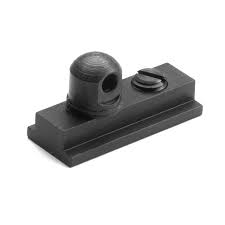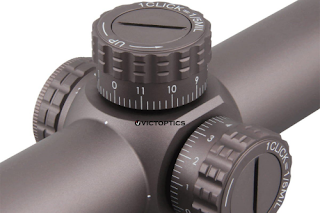Proof of Concept
Before I even start this, let’s be clear about a couple of
things. The intended audience for this
is not people who are looking to become long range shooters with the best
equipment. The equipment and philosophy described
here is a compromise and many will find this a bit crazy. This is to take the Jeff Cooper concept of a
Scout Rifle and expand the parameters without giving up too much of the things
that make the Scout Rifle so handy and excellent as a true general purpose
rifle.
Like the Scout, this project will not be ideal for any single
task. It will not be the best stalking
rifle. It will not be the best woods
gun. It will not be the best long range
or competitive shooting rifle. It will
not be the best fighting rifle. Nothing
could be the best at all of those. The
goal is to find the best rifle that can adequately handle any of those
tasks. For more details on how this
began, here’s a link to part 1: https://cliffy109.blogspot.com/2022/10/beyond-scout-rifle.html
The Rifle
The rifle itself started life as a Steyr Scout. I will not get into the purpose behind all the
modifications here but I will recap them.
The barrel was shortened to 16” and threaded to ½”-28 by ZR
Tactical. It has a Silencerco Harvester
300 suppressor, Andy’s Leather Ching Sling, and the stock was modified for
absolute weight savings by removing the bipod and all extraneous parts. A front swivel stud was added for attachment
of a MagPul bipod (Harris fits but hangs off a good bit). It has TPS aluminum rings (the TRG-W because
the Steyr scope slots are Weaver width and not Picatinny). The scope is a Nightforce SHV 3-10X42 which I
modified to have an effective zero-stop.
I also have an anti-cant level and a flashlight mount on the scope.
Total weight including the suppressor, sling, bipod and one
empty magazine is 9 pounds, 3 ounces.
Not a lightweight by Scout standards, but extremely light by long range
shooting standards. When hunting, I
remove the bipod and that shaves nearly a pound off it, making it still very
light and handy for skulking through the woods and fields of central Virginia.
Overall, this rifle is no longer a true Scout for several
reasons, but it is still very handy, versatile and an absolute joy to handle
and shoot.
Proof of Concept
My plan had been to first take a long range shooting class
from http://www.bangsteel.com/ in the
spring of 2022. I was waiting until
spring because I didn’t want to take a weekend during the Virginia whitetail
season and figured I’d wait until spring when the weather was better. I had the rifle and ammo ready but hunting
season got in the way.
The plan was to take the class and apply the lessons learned
and then find a competitive event to prove the concept. It was a good plan. It was a solid plan. And then…
Then, the Bang Steel guys announced a range day and match in
early January on a weekend that I happened to have the day off and the weather
looked decent. Shooting a match before
taking a class isn’t the best idea but I exchanged a few e-mails with Dan Newberry
and decided to give it a shot. It would
be a training event for me and I came into it with very realistic expectations.
The Match
Since this is the first and only long range match I’ve been
to, I can’t use first hand information to judge it, but the format seemed to be
a LOT easier than things I’ve heard about PRS and NRL Hunter formats. It seemed absolutely perfect for a guy like
me who is trying to learn without being overwhelmed. There was no need to range the targets. There was a display board showing the range
to each target and the number of shots taken at each one. There were only 2 stages. Each one had a time limit of 7 minutes and
each stage had 7 targets with a total of 21-23 shots total per stage. All shooting was done from prone. There was minimal movement but each stage did
require repositioning several times but that only meant repositioning your body
on the mat.
The ranges were not short.
Only one target was under 500 yards.
The targets were mostly in the 2 MOA range, although one at 600 was
considerably bigger (that one had a bonus for 5 consecutive hits in under 15
seconds). There was also one at 850 that
was closer to 1.5 MOA. Wind was pretty
rough, or so it seemed to me. The range
is over a valley and up the side of a small mountain. What we were feeling at the firing line wasn’t
really what was happening at the targets and I was guessing a lot about the
wind.
Unsurprisingly, I finished dead last. Every other participant had taken at least
one class from Bang Steel and some were regulars. That doesn’t mean I didn’t hit some
targets. I finished with a score of 12
and I feel pretty good about that. Some
of the hits I made were a shock to me. I
seemed to do better between 8-900 than I did at some of the closer targets. I couldn’t hit beyond that and I’ll go into
more detail about that in a bit.
Dan and Forest did a lot of coaching on the line. My dope was pretty far off so Dan e-mailed me
a chart that was a pretty good match for reality. Apparently, my 16” barrel is not pushing the
175 grain bullet to 2488 as my chronograph had claimed and was likely closer to
2400. That correction fixed a lot.
What Worked
Scope: The scope was
pretty good with one exception. Let’s
cover the good part first though. At
10X, I was able to see every target quite well.
I never felt under magnified. I
also didn’t miss a front focal plane since I was on 10X the whole time
anyway. The reticle is handy and allows
for easy wind holds, as long as I was able to dial the elevation. My DIY zero-stop worked amazingly well and I
used it more than once when I got lost in the number of turns in the
scope.
The thing that didn’t work so well with the scope isn’t the
fault of the scope. That scope has a
total elevation adjustment of 102 MOA (it is advertised with 90). Once I sighted it in, I have 42 MOA of upward
elevation. Well, two of the stages
exceeded this. No problem, right? The reticle has 30 MOA worth of marks so if I
needed 62 MOA, just dial 42 and use the 20 MOA stadia, right? Well… yeah, but then we have a wind
issue. That took away my aiming
reference point and left me just guessing on what 8 MOA of wind at 1200
yards. I hit absolutely nothing when
doing this. Training likely will address
this… I think.
Suppressor: That
suppressor is awesome. It isn’t just the
noise. It is what it does to
recoil. It tames it like I can’t
describe.
Sling: I made a video
a while back about using a loop sling to control the rifle under recoil. At the time, I was just experimenting and
this match allowed me to experiment a bit more.
On the first stage, I put my support arm through the loop and then back
under the rear of the gun. There was
minimal tension on it. Just enough so
that when the gun recoiled, it didn’t jump far off target. I could almost see my hits (I clearly need to
work on this). On the second stage, I
didn’t do it and it showed. Reacquiring
targets was a chore that I didn’t have on the first stage.
I’ll probably remake this video if it continues to work out
like this but here is what I’m talking about:
https://youtube.com/watch?v=4_3xdVDZy5I&si=EnSIkaIECMiOmarE A loop sling is required and a hasty sling or
carry strap doesn’t count.
Lessons Learned and
Room for Improvement
Scope rings: You’re probably
shouting at your computer wondering why I don’t use a 20 MOA base on my
rifle. The answer is simple. The Steyr has built-in scope mounting slots
and there is no option to add a rail.
The mounts are fixed and there is no changing that. The only way to get more elevation is to use
Burris rings. The Zee rings can add up
to 20 MOA of adjustment. They also fit
Weaver bases but also just look a bit flimsy.
The XTR Signature rings are robust and can add up to 40 MOA. They are listed as Picatinny compatible so
they may not fit my Steyr. I have spoken
to a very reputable guy who has them and he insists they will work so that’s what
I’ll try first. That would give me
nearly the full range of adjustment in the scope and I wouldn’t even need the
zero-stop.
Rear bag: On the
advice of another podcaster/trainer/expert (rhymes with Lank Rally), I bought a
small rear bag called the Staff Sargent Taylor bag. It is hand sewn and is meant as a squeeze
bag. I didn’t use it in the match but I
should have. On the first stage, they
had a spare Armageddon Gear Game Changer in “shmedium” which worked well. On the second stage, they had a large bag and
it was bulky and cumbersome. I didn’t
like it. I should have seen if my
smaller bag would have worked. I’ll
probably buy the Game Changer before the class.
Ballistic Calculator: On the advice of Andy Reinhart, I got the Ballistics
ARC Pro from GeoBallistics. I need to
learn how to make range cards with this but the biggest thing I need is to “true”
my velocity. I have access to a 350
range so that is something I can accomplish before my class or I could do it at
class. I learned the value of this
feature in graphic fashion.
Bipod: The MagPul
actually worked pretty well. I may
change it though. The Javelin Spartan Tactical
is a good bit lighter (8.5 ounces) but it is more than just the weight. It is the fact that it is truly quick
detach. The Magpul isn’t horrible but requires
a different sling attachment where the Javelin would allow me to leave the
Ching sling attached with or without the bipod mounted. I think it matches the goal of a light, handy
and versatile package better than anything else I’ve seen.
Overall
What I learned is that I’m on the right track. The Steyr Scout will never compete with a
dedicated long range rifle in this arena.
A long range rifle will never compete with my Steyr for 95% of what I
use a rifle for though and with this set up, I can reasonably expect to learn
how to use it at ranges well beyond what a true scout rifle could do. It is showing promise of being the true
general purpose rifle I wanted when I started this project.
I also learned that I need training. I don’t mind finishing last when I don’t have
training but I can see the potential. I
have a better grasp on what I need to learn.
I’m ready to learn it and am looking very forward to spending a couple
days at Bang Steel.



















